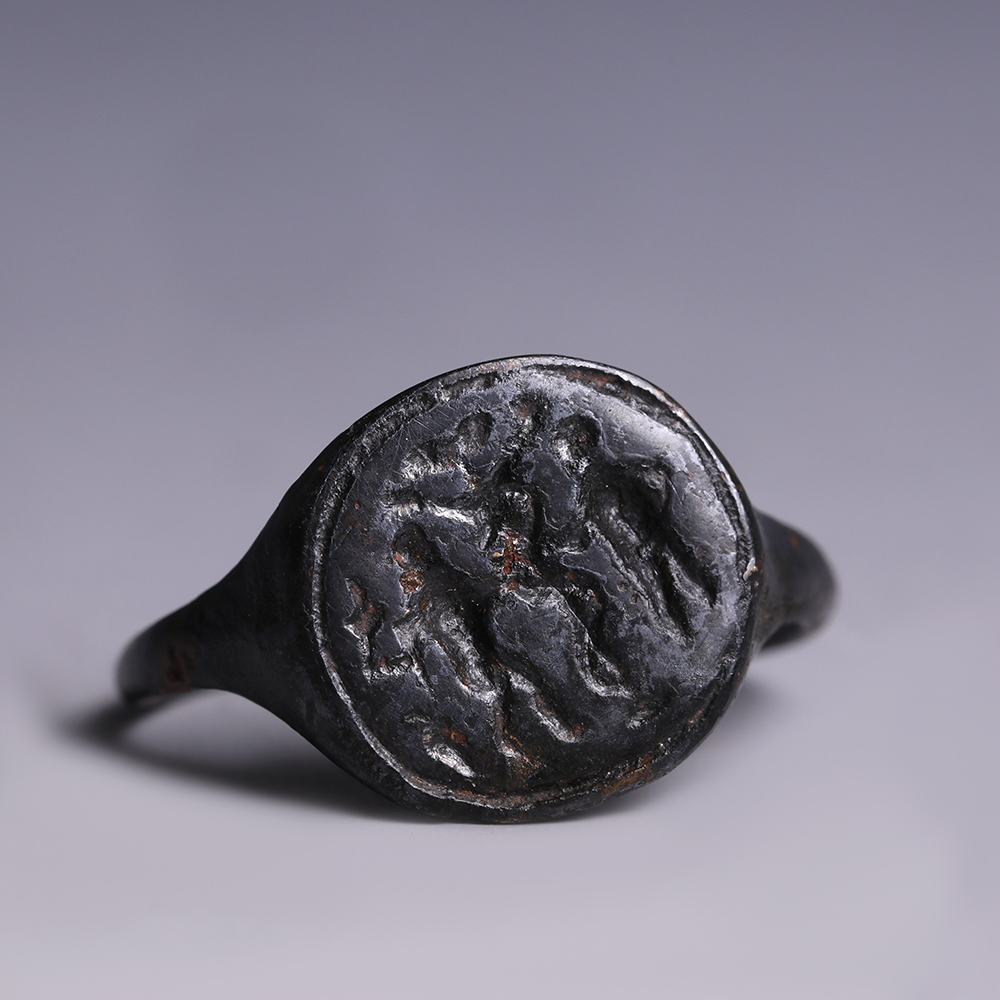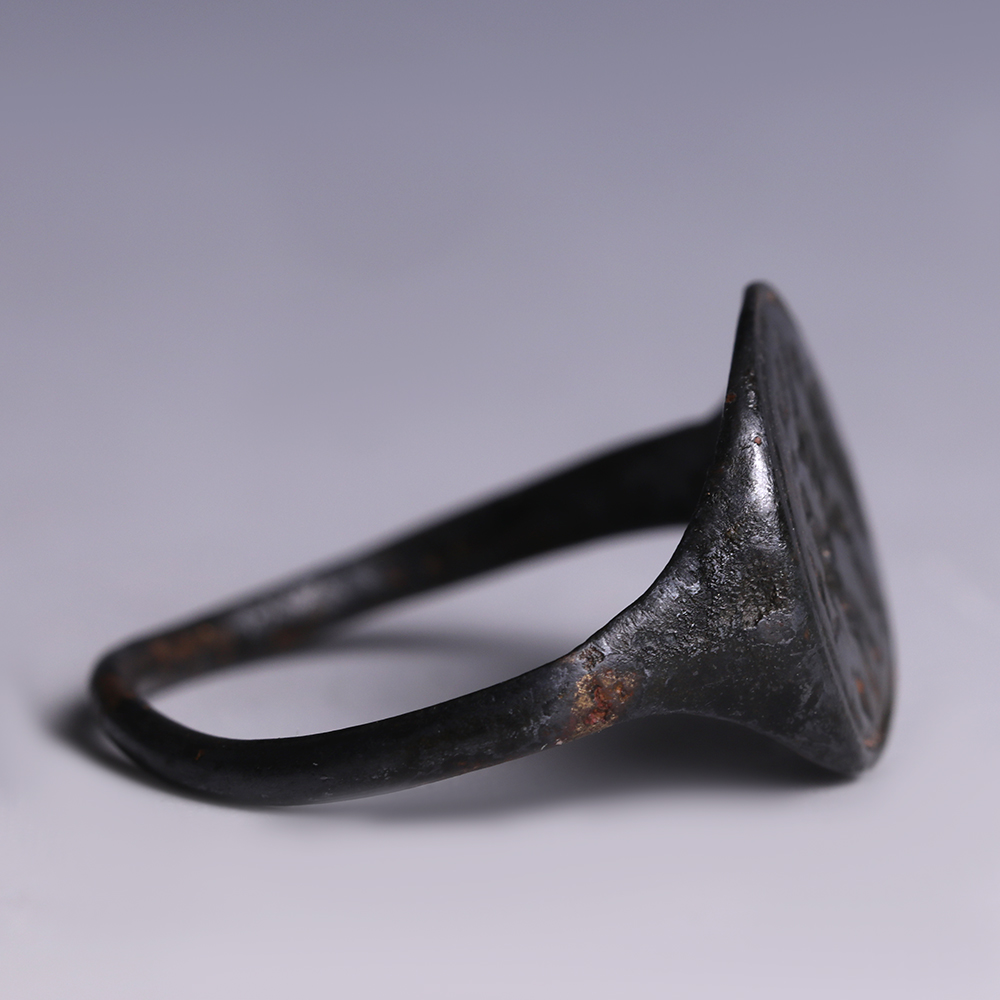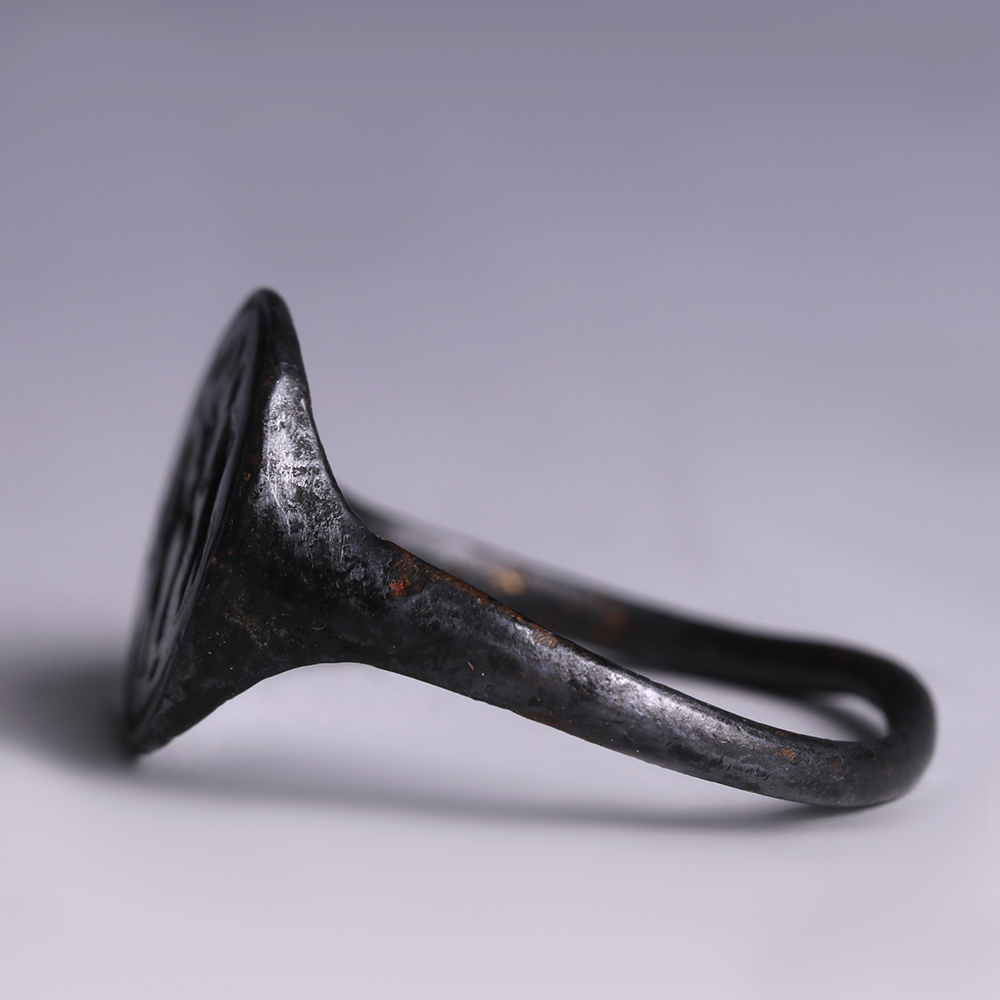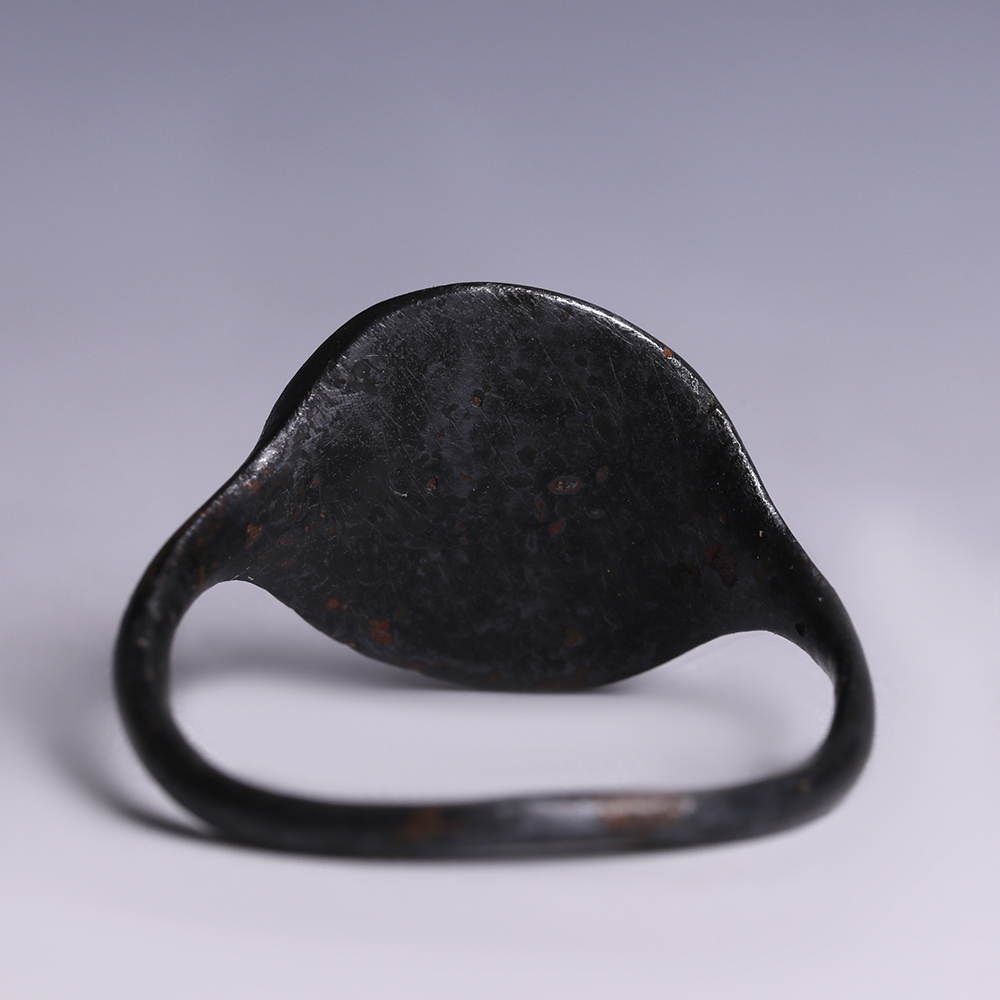Signet rings occur in various ancient civilisations, as they were used to “sign” documents through the impression on hot wax of the symbol on the ring, which would lead to the owner. During the Medieval period, seal rings were widely used in trading to ensure the authenticity and security of a document or letter. The social status of the owner was reflected in the size and media of such seal rings, with the combination of motives engraved on the bezel providing further insight into the owner’s identity, such as their place in a family.
Adam and Eve are central figures in Christianity, providing the basis for the doctrines such as the original sin and the fall of man, described in the third chapter of the Genesis. Such episodes are well-established artistic motifs in Christian iconography, already seen since the first Christian centuries. The iconographic scheme comprising the tree, the serpent coiled around it, and the two human figures holding fig leaves is likely linked to the ancient portrayals of the myth of the apples of Hesperides, and it is thought to have developed around the 2nd century A.D.



